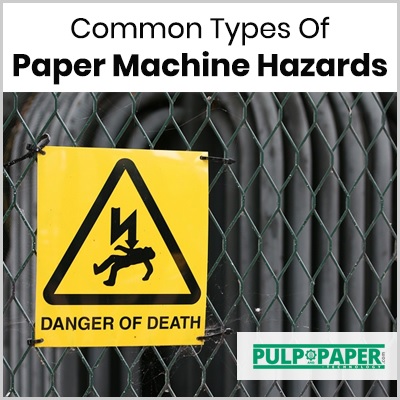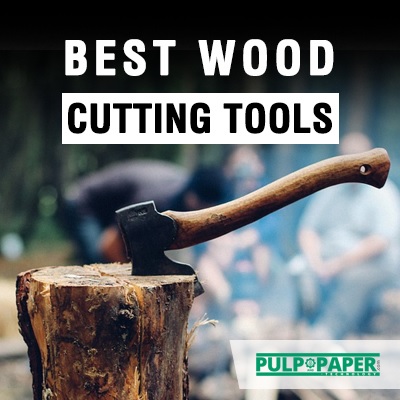Common Types Of Paper Machine Hazards

Some facilities termed as safety facilities are to be provided to the workers, to ensure the human factor to work safely. The most appalling human tragedy of modern industry are the occupational accidents. Safety has been described as everyone's responsibility. However, it is grossly misleading because in modern society, most functions are fulfilled through an organizational hierarchy. Many industrial companies today state that, their first three concerns are quality, safety and production respectively. If you are a paper manufacturer, we probably don’t need to tell you that - paper manufacturing has its own unique set of hazards. It's important and worthwhile to control those hazards and keep employees safe on the job.
Many paper machine hazards must be considered in order to create a safe, healthy work environment, in a paper manufacturing facility. Any measure of risk related to those safety hazards in paper manufacturing can be greatly decreased if the employees are aware of these hazards.
Types Of Paper Machine Hazards
Now, let’s start to look at some of the most common types of hazards at a paper machine.
A) PINCH POINTS
Much familiar to the way it sounds, a pinch point is a point where a person can get pinched between a stationary object and a moving part or between moving parts. A person or a body part can be crushed or caught by equipment movement in this type of paper machine hazard. The pinch points can lead to permanent disability, dangerous crushing injuries, amputation and even death. These pinch point hazards can be found around or beneath loads being hoisted or transported.
To prevent pinch point injuries, it’s a common practice to place single point or barrier guarding, or other engineering measures/controls to keep people from getting caught up in the pinch point. Report it to your supervisors if you are working and see an unprotected pinch point that seems like it could cause an injury or worse, so the situation can be addressed.
B) NIPS
These are a specific type of pinch point created by reciprocating or rotating parts. Nips are common at paper machines usually associated with adjacent rotating rolls, where a rotating roll and a moving rope or web come together, or around moving ropes and rope sheaves. These can be hazardous especially to fingers and hands because they are often present in areas where people feed materials into the paper-making process, must add lubricants, or make adjustments.
Nips can be further broken down into two different types:
- Ingoing
- Outgoing
An ingoing nip is located where two machine parts first meet, and one or both parts rotate. An ingoing nip can easily pull fingers, jewelry, hair, hands and even entire bodies into machinery and equipment. This can lead to serious injuries, including amputations, abrasions, burns, crushing injuries and even death.
An outgoing nip is quite the opposite of an ongoing nip. In this paper machine hazard, not a finger or similar body part will get caught up and crushed, but something that enters the nip point, say for e.g. a hand tool, will pass through the rotating parts and shoot out the outgoing side. It may perhaps strike a person or object after being ejected.
The main safety tip for avoiding projectile hazards from outgoing nips is to keep loose objects away from the nip, that could potentially enter the nip area. Another vital safety tip is to place appropriate machine guarding around the nip when possible.
C) SHARP SURFACES
These are machine parts or objects that can cause deep wounds, cuts, scrapes, punctures, and even amputations.
Few things to keep in mind for safety from sharp surfaces :
- Be cautious when working with your hands, as these are the most common injuries associated with sharp surfaces.
- Always use a tool that has a sharp surface, like saws, knives or blade. Be careful and don’t improvise.
- When moving around the moving fabrics of a paper machine, always be careful with the edge of a moving fabric as it will cause a very serious cut.
- Be careful when handling doctor blades and worn creping blades. Always follow all of the established and standard operating procedures and wear all required personal protective equipment for your location.
- Be cautious when performing new or unfamiliar tasks or not routine for you. Be alert for sharp surfaces such as protruding bolts, sharp or rough edges, metal blurs.
D) HOT SURFACES
These are another common type of hazard in a paper manufacturing facility. The machine surfaces may be hot as they are designed either to produce or transfer heat, or they may also be hot because of the friction from moving parts. Steam traps and pumps, steam lines, could be some of the potential hot surfaces on a paper machine.
The hot surfaces may sometimes remain hot for minutes, or even hours, after a machine has been turned off. So, be cautious of it and don’t touch its surface unless you are sure it's safe, if you are unfamiliar with a machine.









